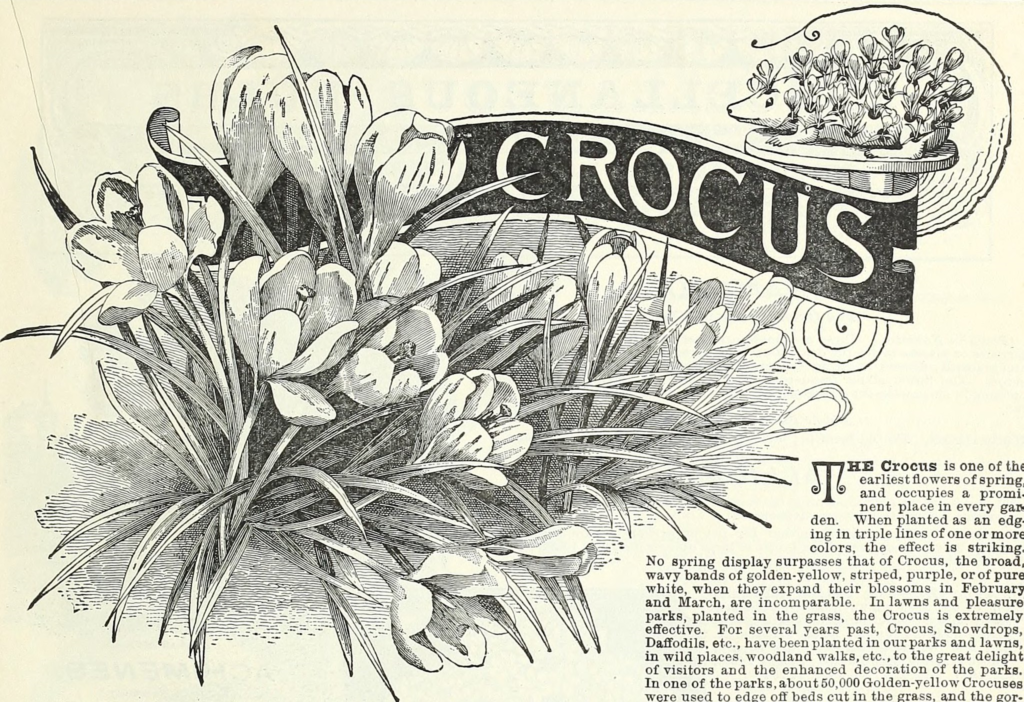We have relied upon plants for food, medicine and their beauty since our time on this planet began. The plants in our gardens have many stories to tell about our history. Among the first flowers to appear in spring are bulbs like the daffodil and crocus. In summer, tall spikes of gladioli and varied forms of dahlias make a vibrant cut flowers. In autumn, we plant more bulbs in anticipation of next year’s blooms. Let’s find out what bulbs are and how we can grow the most stunning floral displays out of them!
What are bulbs?
Bulb is a catch-all name for a group of flowering plants which have underground food-storage organs. These organs help the plant to survive through drought or cold. This group of bulbous plants includes: True bulbs, including daffodils, are mostly layered (like an onion) with a papery outer skin.
Tubers, including dahlias, have swollen stems or roots which are irregularly shaped.
Corms,including crocus, often look like true bulbs from the outside but when you cut them in half they are solid rather than layered.
Rhizomes, including ginger, are mostly swollen, horizontal underground stems.
Where to grow?
Most bulbs like a sunny location and a free-draining soil. They like to be lightly moist in summer, and not too wet in winter. You can grow them in sunny flower borders, pots and planters, and some, like crocus, will even grow in your lawn. Some don’t mind a little shade, like snowdrops and daffodils, and will grow under trees or around shrubs.
When to grow?
You plant bulbs when they are dormant. Spring flowering bulbs are best planted in early autumn. Tender summer-flowering bulbs, like gladioli, are planted in spring

Bulb Planting
Learn how to plant your bulbs properly, in four steps.
1) Choose
Consider which bulbs will best suit your planting position in the garden or the size of your container. Have fun too – pick flowers and colours you like!
2) Prepare
PLANTING IN THE GROUND
If you have a free-draining soil, use a bulb planter or trowel to dig holes for planting your bulbs in. If your soil is a heavy clay, dig in lots of compost or other organic matter, like leaf mould, to help aid drainage.
PLANTING IN POTS
Fill your pot with compost that best suits your bulb choice. Usually bulbs like a well-draining compost – a mix of peat-free multi-purpose compost and grit is a good start
3) Plant
• Plant your bulb at a depth of two to three times its length.
• Space the bulbs twice their width apart.
• Plant your bulb with the pointy end upwards.
Check the bulb’s packaging for specific planting details. If planting in pots, you can grow different types in one pot by layering them, placing deep planting bulbs, like tulips, in the bottom layer and working up.
4) Grow
In the growing season, feed and water your bulbs. Use a high-potassium feed (such as a tomato fertiliser) to encourage growth. Remove dead flowers
This blog is adapted from a bulb history activity created for The Hidden Gardens by writer and gardener Lynne Maclagan (former volunteer and garden assistant with The Hidden Gardens), and the artwork is by Alan Lyons.

